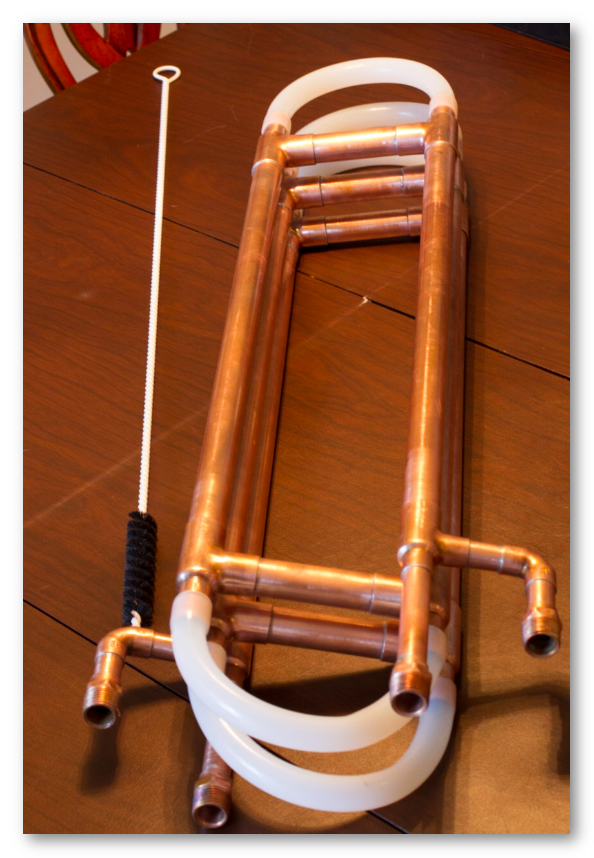@RPh_Guy, I agree that if you just scroll to the bottom and look at the table, the numbers can be misleading. But that's why I wrote all the stuff above it. I attempted to compare a wide variety of cooling tools, which leaves me open to snipers from all sides because they can't 100% be compared in a simplistic table of time to chill. My comments:
1. You had a good suggestion that it would've been a good data point to add a recirculation pump to the simple coil and JaDeD immersion chillers. I didn't think of that combination.
2. I wanted the simple coil immersion chiller to be my baseline as that's what many people start with & use because it's cheap and simple. In that form, they do not use a pump because that's extra complication and extra cost.
3. The JaDeD IC is not cheap, so maybe that user is more likely to use a pump to recirc while chilling instead of doing the manual bobbing up & down. It is still a good comparison in my data between simple IC vs fancy IC since in both instances there is no pump (and yes, I did the same non-controlled, non-standardized up & down manual bobbing of the IC until I got my last data point).
4. I thought quite a bit how to compare the 2 different groupings of test objects here (those flowing through a chiller and ouputing chilled wort vs the IC that is chilling the whole volume of wort at one time in the kettle). As I wrote in the article, I chose the time to 5F above cooling water for both because that would be the point in time for both you could transfer to fermentor. In the case of the units with the pump, that means redirecting the output hose into the fermentor and letting it run. For the IC, depending on your set-up, that may be picking up the pot and pouring into fermentor, or opening a valve and letting gravity run it into fermentor. I wasn't about to make my experiment even more variable by trying to account for all of these different methods. But that's why I put the data in the table of my wort flow through the chiller so people could see the flow rates to understand.
5. Also, as I mentioned in the article, comparing individual results from one person to another is going to introduce a lot of variables: each person's ground water temperature, tap water pressure, hose flow restriction due to diameter/material/etc, volume of wort they are chilling.













































![Craft A Brew - Safale S-04 Dry Yeast - Fermentis - English Ale Dry Yeast - For English and American Ales and Hard Apple Ciders - Ingredients for Home Brewing - Beer Making Supplies - [1 Pack]](https://m.media-amazon.com/images/I/41fVGNh6JfL._SL500_.jpg)













